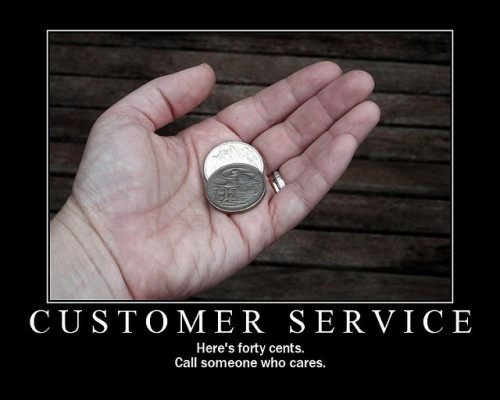
You can spend the better part of a decade painstakingly growing a business from scratch. Or you can buy eCommer business and – with a few tweaks – quadruple profitability in just a couple years.
Which options sounds better to you?
It’s a clear choice for Dana Jaunzemis of HomeHealthTesting.com and 44Ideas.net, whose specialty lies in reviving businesses where growth has slowed, or even stalled out.
Even if you’re just thinking about getting started in eCommerce, buying a business is still a potentially viable option. “It can be easier than starting one from the ground up,” says Jaunzemis. “Buying takes the whole learning curve out of the start-up phase. It’s like trying on clothes in a dressing room and saying, ‘Well, this looks good’.”
Jaunzemis weighs in on how to make the buying process feasible, rather than an unattainable feat. Read on to see how to identify key points for making dramatic improvements to a struggling business.
A Real-Life Case Study
“This is my favorite topic in life,” says Jaunzemis, who purchased HomeHealthTesting.com four years ago. At the time of purchase, it was a seven year-old site being run by the founder. It had nice growth in the first three years and then by its fifth year, as is often the case, it leveled off. The business wasn’t losing money, but it remained stagnant.
There were two key things Jaunzemis looked into before she decided to pull the trigger on purchasing the business: technology and key products with giant growth potential.
Jaunzemis finds that small business owners easily fall behind on technology and often don’t even realize it. This is an easy fix to instantly boost sales to a struggling enterprise and shouldn’t be a reason to discount a business.
Next you want to pinpoint the handful of products that can dramatically help the business grow. “The beauty of buying a business is that you have history behind you to look at,” she says.
By focusing her attention on these two key points right off the bat, HomeHealthTesting.com has been able to quadruple net profit since Jaunzemis took it over.
“I really don’t care what the gross sales are, I find that irrelevant,” she says. “I am focused real keenly on profits.”
Picking The Right Business To Buy
There’s lots of things to consider when you’re shopping for a fixer upper.
The first step is to look at highly fragmented markets where there isn’t a huge leader, but a lot of small players.
“I typically never want to buy the market leader since there’s not as much room for becoming one,” she says. “I like the underdogs.”
Gross margins also come into play here when you’re looking into an eCommerce business for sale. “I won’t do anything less than a 30% gross margin. That automatically eliminates a ton of eCommerce businesses for sale.”
The beauty of buying a business is that you have history behind you to look at.”
Next is to find an identifiable niche where you can really get to know who the ideal customer is. Jaunzemis will avoid markets that have a huge customer landscape. “In those markets, it’s hard to niche down and find the ideal customer,” she says. “Which means it will be harder to target and sell to an ideal customer.”
If all those check out, the hardest part is behind you.
Attributes That Should Make A Buyer Shudder
Low margins are a deal breaker. Always. Jaunzemis warns about even considering a business where the margins are grim. A business that relies on high volume takes a lot of time and effort to improve.
If the business has been involved with any prior legal issues, that might be another reason to give pause. Even if a prior lawsuit has been cleared, it’s generally not worth the potential headache down the line. Once you’ve got an established rapport with a seller, simply ask them about any legal issues. Usually, they’ll freely disclose any legal problems that have occurred.
“If any lawsuits or legal actions come up from the past, I’ll generally bow out,” says Jaunzemis.
The One Issue To Fix Right Away
Let’s say you’ve bought an existing eCommerce store. Congrats! The first order of business should be to review all the technical infrastructure that currently exists.
This is the issue you can most quickly address to improve profitability and it can affect how you value an eCommerce business right off the bat.
“From the website to internal systems to the platforms they’re working on, even the shipping and social media,” says Jaunzemis. “Really looking at the entire way the business communicates with the world is hands down the fastest way to grow the business in the right direction.”
For HomeHealthTesting.com, Dana grew her organic rankings instantly by updating the code that was running the site, as well as the cart. The leaner, faster code helped her rank better in the search engines.
The previous owner had a clunky sign-in process at checkout and a decade old eBay stores type cart. Moving over to Shopsite, which they are currently on, gave another huge boost in sales.
“I do believe that technology is part of the drivers of growth,” she says. Sure you’re buying a business, but you’re also looking to buy an eCommerce website.
Jaunzemis suggests a do-it-all shipping software, like ShipWorks, that can download orders, print labels and packing slips.
“I like the way the database works. After it downloads the order, I can access more information on the order side to summarize, follow up and look at the history of the business and at product trends.”
Other things to keep in mind? Keep standard operating procedures in an organized manner (see our primer on SOPs here) and make sure your workflow is as seamless as the other changes you’ve started to implement.
Become Obsessive About Tracking Key Stats
Jaunzemis is a religious tracker. She tracks every number possible on a weekly, monthly, quarterly and annual basis.
“I’m entering a new industry when I do this, so I have a lot to learn about the business and the industry,” she says.
The rationale?
“What gets measured, gets improved. I track a lot of numbers myself. I learn better if I am the one preparing the report.”
After digging through numbers that seem less relevant, Jaunzemis will drop those numbers and refine her report over time. She focuses her attention on numbers that drive improvement and at numbers that feed each other.
For example, if a Bing campaign performs 4x better than an AdWords campaign week over week, by tracking this on a weekly basis it’s possible to make realtime efforts for allocating funds and resources to the most effective channels.
Using this approach, it’s easier to see what numbers are improving, what’s declining and spot the highs and lows of the business.
“Even cart abandonment rates are things I’ll track on a weekly basis,” she says.
By looking at numbers week over week, it makes it easier to adjust the business to be more effective.
“It sounds a little obsessive, but I think it has made a difference in how I’m able to adjust a little quicker and more than that, I can see success incrementally,” she says.
By tracking everything, she can feel the business grow (or not) per channel and on a shorter timeframe.
Study The Business’ History
Unlike a startup where it’s a guess from the start, buying a business allows you to look at an established history.
“I’ll take the sales history of the products and know what the best performing items are for gross margins,” she says.
The 80/20 rule usually applies here. There should be 20% of products that are contributing 80% of gross margins. As a business owner, you need to know which ones those are.
Focus on those core products that are already delivering and ask yourself how you can sell more of them.
“You can change the gross margin of the business as a whole just by selling more of the best products,” says Jaunzemis.
HomeHealthTesting.com grew by a good ten percent by focusing on a handful of products. In fact, Jaunzemis focuses on just two.
“I focus relentlessly on two products (which won’t work for every business) to move the aggregate gross margin by selling the lights out of things that had a higher margin.”
Here’s a real-life example from her business. The biggest selling item as far as gross revenues was an HIV test. However, they made more in gross profits on a drug test.
That alone made her realize she had to do more to push the drug tests, whether it was content marketing or blogging, to move the needle in the right direction.
Put Energy Into Moving Key Products
Driving more organic and paid traffic is important. In looking at the example above, Jaunzemis moved all the budget for paid advertising into the highly profitable drug test and put zero budget into promoting her HIV test.
You can change the gross margin of the business as a whole just by selling more of the best products,” says Jaunzemis.
As far as growing the product organically, she focused on creating more information and figuring out what the customers needs were with things like drug testing infographics and blog posts.
Pay Attention to Pricing
Price testing doesn’t work for every niche, but being priced competitively is important.
“Google’s product listing ads are a very price sensitive area,” says Jaunzemis, “and one we rely on heavily for sales.”
One of the big drivers of instant growth was bringing prices down from the previous owner. “He had priced himself out of the market and didn’t go back to look at it,” she says. “So once we adjusted, we were able to better compete.”
Thanks to Jaunzemis’ “obsessive” weekly reports, she can see that if conversion rates for a product drop in a week, she can look into it and see if a competitor has a better price in that channel, fix it, and be back on track.
Customer Service Matters
Offering a great experience to customers always helps you grow. In order to ignite and fuel growth, connecting with customers is key, even in the often anonymous world of eCommerce.
Look at your business as a whole from the customers point of view and pay attention to every touch point that a customer has with your business. Is it pleasant? Positive? Is this policy turning people off? Is the wording friendly and open?
“This is the hardest part of eCommerce,” says Jaunzemis. “If a customer has picked up a phone and called us, we are going to do anything they ask since it is so rare that we even get phone calls.”
Dana has flexible internal policies include “whatever it takes” to make the customer happy.
Make sure your policies reflect the temperament you want the business to have. You don’t want any customer to have the feeling that you won’t do what your business says it’s going to do.
If All Of This Fails…Then What?
Once you have a lot invested in something, it’s hard to make an objective decision to see if something isn’t working out.
“One of the hardest things to know is when to get out,” says Jaunzemis.
The gut check is to ask yourself this one question: Would you buy this business today?
If you can’t see the next year as being better and you don’t think there is anything else you can do to make it better, it’s time to get out and sell it. Even if it means you lost money from when you purchased it, you need to look at the cost of your future time.
Sure, you may have lost hours and money, but you don’t want to go down the rabbit hole of further loss in the next few years and make it worse.
A High-Level Summary
Invest in tech.
Learn where the business has neglected important systems and infrastructure and put money into the areas that make the most sense.
Obsess over the key metrics.
Track these on a granular, regular basis.
Identify the top products.
Know what products are contributing the most profit to your bottom line. Drive traffic and messaging around these and create value around the products themselves.
Do a customer service audit.
The soup-to-nuts experience for your customers should be great from start to finish. Pretend to be a customer and go through the complete ordering process. How is the experience? What can be improved?
Whether you’re just getting started in the world of eCommerce or you’re looking to add a new business to your enterprise, consider the buy and revive business model. Starting from the ground up might sound like an easier way to to take on a new venture, but reviving an existing business that could use a little TLC could well be a much faster path to business success.
This post was taken from our podcast on reviving a struggling eCommerce business with Dana Jaunzemis. You can learn more about Dana and her work at 44ideas.net. Original podcast produced by Andrew Youderian with post written by Laura Serino.
Customer Service photo: Kate Andrews





